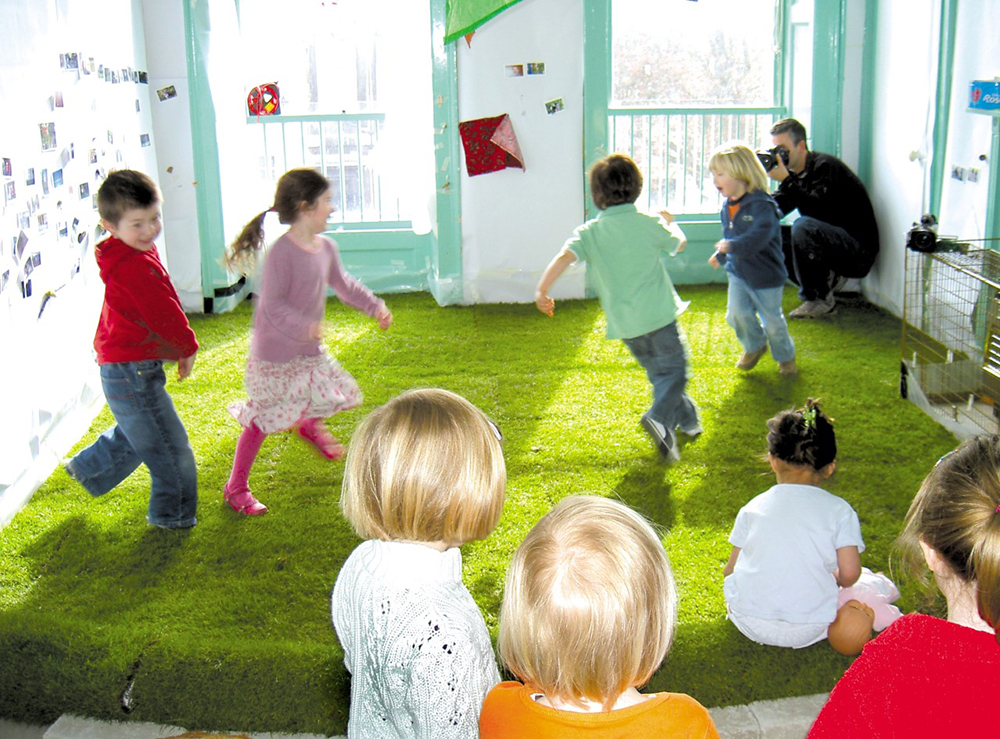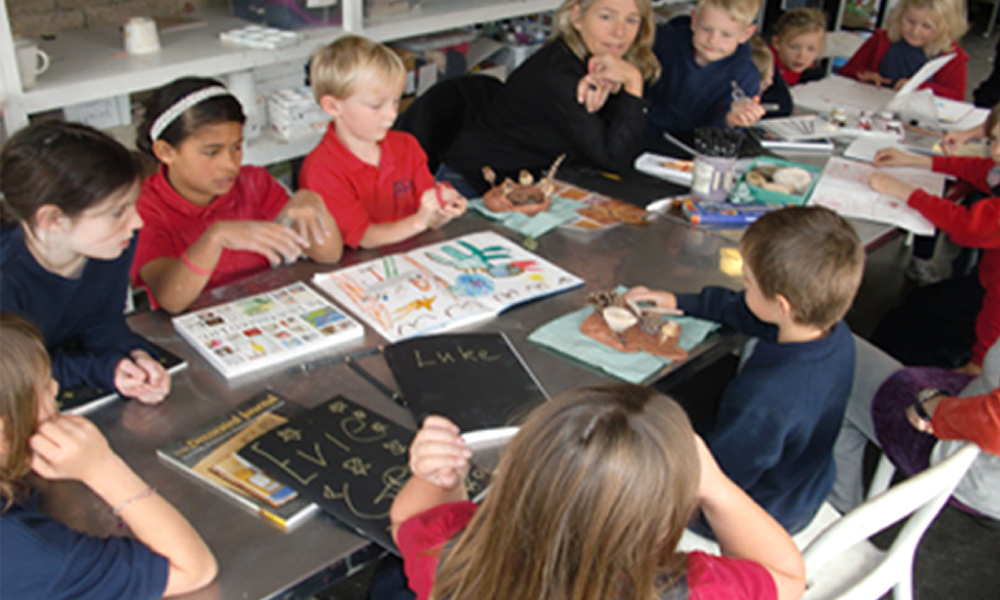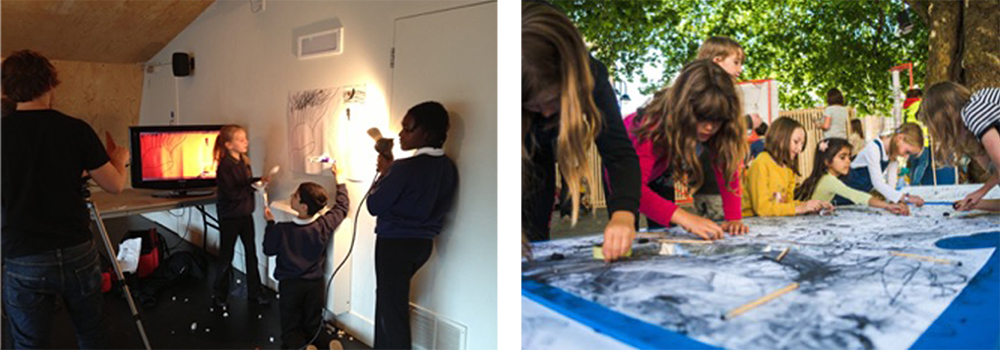Wish List
The aim of sharing wish lists is that we might be able to see where we can better support and learn from each other.
What Do You Wish For …
I wish for a world that is full of hope and imagination. In these uncertain times, I love Rebecca Solnit’s words, “Hope locates itself in the premises that we don’t know what will happen. In the spaciousness of uncertainty is room to act.” (Solnit, 2016)
Vital to creative education is the need to encourage imaginative spaces for hope, and to help teachers, artists and children to be more conscious of how they can use, inhabit and develop these spaces. I have been incredibly conscious of this over the past 18 months, as we struggle to look forwards and find educational paths ahead that will inspire renewed and re-energised creative action.
 The arts invite this creative action, and they are a human right fundamental to our democratic freedoms. I am convinced of the power of the arts to be transformational for individuals and our society. I wish for everyone to explore and celebrate their imagination and creativity. I wish for every child to flourish, no matter what their background or circumstance.
The arts invite this creative action, and they are a human right fundamental to our democratic freedoms. I am convinced of the power of the arts to be transformational for individuals and our society. I wish for everyone to explore and celebrate their imagination and creativity. I wish for every child to flourish, no matter what their background or circumstance.
Creativity is a way of being in the world. Creativity and imagination are innate human capacities – they are the essence of what makes humans special. Creativity is about human potential – and not just the domain of the arts. However, I teach art because it makes visible our creative human potential – the way we can learn in, about and through the arts, to imagine possibilities, explore ideas and express our personal, social and cultural identities and to make sense of the world and to make meaning.
Children especially have a powerful drive to explore, hypothesise, make connections and communicate ideas. I want this creativity to have a space to breathe: “Imagine a world where our children are engaged in serious creative play, where their environments are full of space and light … where adults are companions in the children’s enquiries about the world … creative adults who show a deep respect for children’s ideas, theories and fascinations.” (Hay et al 2008).
Children are active citizens and protagonists of their own learning. They think through their hands, hearts and minds. This thinking through making, using intelligent materials, involves a dynamic process that is always evolving, adapting and finding new possibilities. Being an artist involves asking good questions, solving problems, making sense and making meaning. The adult then becomes a ‘lender of tools and processes’ (Vea Vecchi in Edwards et al) in co-enquiry, not a director of outcomes.
Pedagogy and Activating Creative Agency
We all have agency, our collective imagination, ideas and related action can make a difference to all of our lives, but this needs nurturing in order to flourish. We have proof through the pandemic that the arts support children’s happiness and wellbeing. As Sir Ken Robinson said, we want to support the development and well-being of the whole student, intellectually, physically, spiritually, and socially, recognising the vital interdependence of all of these aspects of development, within each student and the community as a whole.
The term pedagogy encompasses the principles, practice and profession of teaching – our approach to teaching and learning and the shaping of the learning environment as a whole. A creative reflective pedagogy that is co-designed and embedded is essential – inviting trust in children and young people’s ideas and respect for all learners, listening to different voices and expression in one hundred languages (Loris Malaguzzi in Edwards et al).
As adults we can create the conditions for children to grow and flourish through supporting children’s learning identity as artists and embedding a creative and reflective pedagogy. Human flourishing is developing a love of learning, to find intrinsic motivation and self-determination in everything we do. I wish for an education system that values curiosity, joy and pleasure in learning, opening minds through empathy, sensitivity and compassion.
 As adults we can help children and young people develop artistic ‘habits of mind’ – creative thinking, imagination, playfulness and reflection. Valuing uncertainty and embracing failure is central in the artistic process – we all learn through making mistakes and experimentation. If children see themselves as artists they can play with possibilities and help to make the creative process visible. Being an artist also involves asking questions, solving problems, thinking through materials, making sense and making meaning.
As adults we can help children and young people develop artistic ‘habits of mind’ – creative thinking, imagination, playfulness and reflection. Valuing uncertainty and embracing failure is central in the artistic process – we all learn through making mistakes and experimentation. If children see themselves as artists they can play with possibilities and help to make the creative process visible. Being an artist also involves asking questions, solving problems, thinking through materials, making sense and making meaning.
Lily (age 7 years) shared her thoughts with me about being an artist,
‘It’s easy! Have a great imagination, and then you will have great ideas
be positive, don’t worry if you make mistakes
be good at playing
be good at thinking,
be thoughtful
art is about everything!’
During my PhD (forthcoming publication Children are Artists in 2022) interrogated my own professional practice as an artist educator. I drew on collaborative research I had conducted with the educational charity 5x5x5 (now House of Imagination) giving particular attention to four strands of research – creative values, environments, relationships and dispositions – and how these might support an individual child’s developing identity as an artist. This research evidenced the key characteristics of the role of adults in this process, with a focus on valuing self-directed enquiry (rather than adults’ prescriptions) and an emphasis on the child’s developing ideas and self-concept as an artist, inviting children to explore their imagination and generate ideas in a wide range of media.
In tandem with this research, House of Imagination operates as a studio environment for children and young people to work alongside artists and creative professionals, as creative role models. House of Imagination offers an alternative, creative approach to learning, reconceptualising the curriculum with the city as a campus for learning. Together with children, schools, artists and local arts organisations, we research experimental sites for pedagogical innovation to place children’s agency at the centre. These spaces can be interrogated to distil a repertoire of creative pedagogical characteristics that optimise freedom, agency, choice and imagination. Our local spaces include galleries, museums, libraries, theatres, public squares, streets, riversides and parks. This year we helped to produce the Forest of Imagination 2021 in Bath, including an installation of The Living Tree inside the egg theatre, where children and families were invited to play, explore, learn and create alongside artists, educators, musicians and dancers.

Embedding Creativity
Our creative methodology in the House of Imagination – everyone an artist – drives our ambition for artistic excellence and creative education. Everyone can be given the time, space and attention to realise their creative potential in a creative and nurturing environment. Our strapline is ‘inviting the freedom to follow your fascinations’. It is important to emphasise possibilities not prescriptions, starting with the individual’s interests and inquiries. House of Imagination engages artists, researchers and educators in creative and reflective practice that places the arts, creativity and wellbeing at the heart of a future pedagogy.
A creative pedagogy to embed the arts and culture in learning and everyday practice is vital for the development of every child, thinking especially about the creative capabilities needed now and in the future. Art experiences show us that the imagination and creativity are not marginal but central to the healthy development of individuals and society. An effective, democratic and inspirational creative pedagogy needs to reflect on who we are and what we can do now, but also on what we want to do in the future and the kind of society and communities we want to live in.
References
Edwards, C. et al (1998) The Hundred Languages of Children – Advanced Reflections. Greenwich, Connecticut: Ablex Publishing. Edwards et al 1998
Hay, P. et al (2008) Researching Children Researching the World: 5x5x5=creativity. Trentham. Edwards et al 1998
Solnit, R. (2016) Hope in the Dark, Canongate.
Websites
https://www.bathspa.ac.uk/our-people/penny-hay/
http://houseofimagination.org/
http://www.forestofimagination.org.uk/
